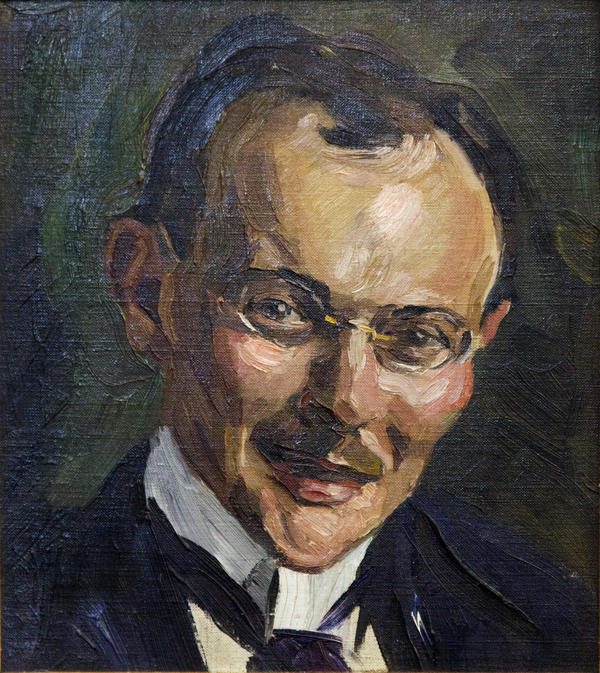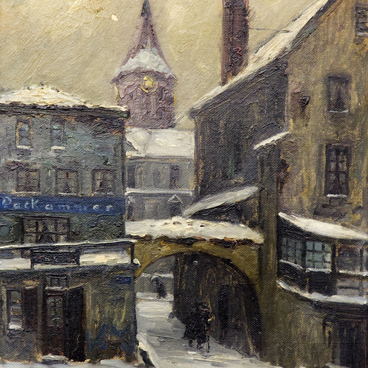Eduard Bischoff (1890-1974) was going to become an elementary school teacher, but the desire for creativity changed his plans. In the history of art he remained a symbol of the culture and ideals of East Prussia. Bischoff painted portraits, chamber watercolor landscapes, created prints, mosaics and monumental murals. Unfortunately, many of his works perished during the World War II.
#1
Eduard Bischoff
Portrait of a man
#3
#4
Already in his youth, Bischoff became acquainted with such trends in art as naturalism, symbolism and idealism, drawing from them what was in tune with his personal aspirations. The role model for the young author was his great compatriot - Lovis Corinth.
#5
After getting acquainted with the artist in 1924, Bischoff said:
‘Not only his outstanding works, but also his personality is the anthem of one of the most beautiful German lands - East Prussia’.
#6
Today, the same is said about him.
#7
The portrait of a man presented at the exhibition belongs to the early period in Bischoff’s work, when he was fascinated by symbolism and romantic painting in the style of old masters. The artist performed this work at the Academy of Arts in Königsberg, where he studied shortly before the outbreak of World War I.
#8
The dominating style in the European painting of the time was cubism, but Bischoff was not interested in it. The artist depicted the model in the three-quarters turn, classic for the portrait art. By means of playing with light and shadow Bischoff made the image voluminous. On the bridge of the nose and around the eyes there is subtly drawn barely noticeable golden frame of glasses. The wide forehead of the man, cheekbones, nose and pointed chin are marked with overtone - in this way the picture looks deeper.
#9
Bischoff chose calm, muted dark tones and pastose (dense and relief) manner of painting, that makes his work more expressive. In many ways these techniques are aligned with the approaches of post-impressionists - especially with the early painting of Cezanne.
#10
Bischoff’s further work and personal life were affected by the Second World War. In the 1950s, he and his family moved several times, fleeing until he settled in Soest, a small town in the West Germany. Bischoff was alien to the heroics of the National Socialist art, as well as to the daring artistic experiments of the expressionists. One of the most notable works that the artist created under a state contract was the painting in the Public House of Insterburg. Bischoff worked on it from 1936 to 1939. After the war he turned to neoclassical art - chamber and devoid of heroic pathos.
#11
Kaliningrad Regional Museum of Fine Arts
read morehide
00:00
00:00
1x
Portrait of a man
Creation period
1913
Dimensions
31x22 cm
Technique
Plywood, oil
Collection
2
Open in app
Share



